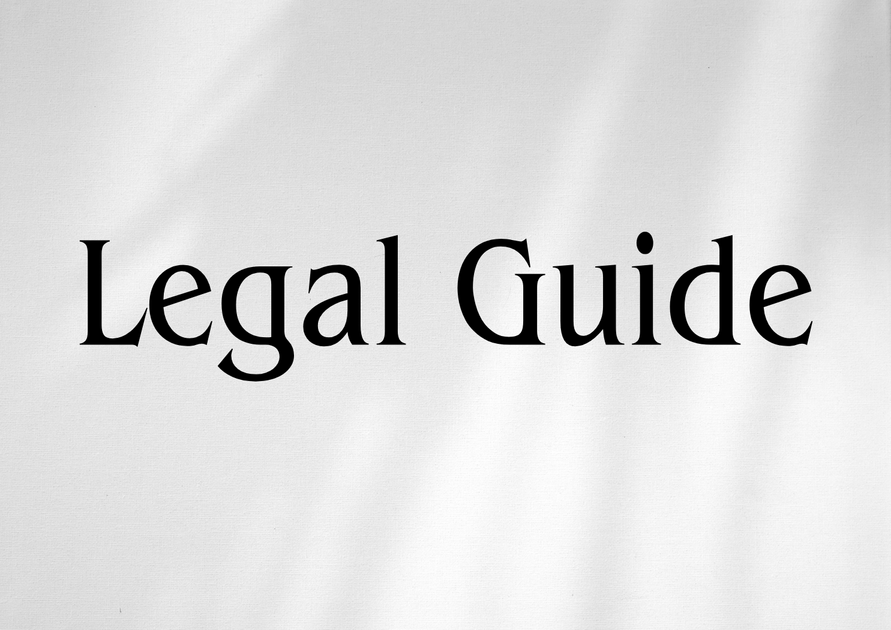Introduction
In the rapidly evolving legal environment of the United Arab Emirates (UAE), the subject of alimony—also known as ‘nafaqa’—commands critical attention, especially following significant updates to family law in recent years. The intricate nature of marital settlements, combined with shifting regulatory frameworks, makes it imperative for businesses, legal professionals, HR managers, and private individuals to understand the exact parameters and legal protocols for the termination of alimony obligations. As the UAE continues to modernize its legal system, harmonizing traditional values with international best practices, knowing when and how alimony can be lawfully terminated is more important than ever.
This article delivers a comprehensive, consultancy-grade analysis of alimony termination under the current UAE legislative landscape, referencing official sources such as the UAE Federal Legal Gazette, Ministry of Justice, and recent Federal Decree-Laws. We offer practical compliance strategies, a clear comparison of old and new legal regimes, illustrative case studies, and authoritative recommendations to guide both organizations and individuals. This analysis is particularly pertinent in light of the Federal Decree-Law No. (41) of 2022 on Civil Personal Status and subsequent executive regulations coming into force in 2023 and 2024, shaping the future of family law and its impact on the private and corporate sectors.
Table of Contents
- Overview of Alimony Under UAE Law
- Legal Framework Governing Alimony Termination
- Key Legal Grounds for Alimony Termination
- Comparative Analysis: Previous vs. Current UAE Laws
- Practical Guidance and Risk Management
- Case Studies and Hypothetical Scenarios
- Compliance Strategies and Best Practices
- Conclusion and Future Outlook
Overview of Alimony Under UAE Law
Defining Alimony and Its Importance
Alimony, or ‘nafaqa’, comprises the financial obligations that one spouse—historically the husband—must provide to the other spouse following divorce or separation. These expenses typically include housing, food, clothing, education, and medical costs, and are central to safeguarding the welfare of the dependent spouse and any children involved. In the UAE, these rules reflect a blend of Islamic jurisprudence and evolving civil law principles.
Sources of Law
The primary legal framework for alimony, including its termination, has undergone substantial transformation over the last two years:
- Federal Decree-Law No. (41) of 2022 – On Civil Personal Status, introduced a modern, secular family law framework for non-Muslim expatriates in the UAE, providing enhanced clarity and protections.
- Federal Law No. (28) of 2005 – The original Personal Status Law, remains the reference for cases involving Muslim spouses, albeit with notable amendments.
- Executive Regulations (2023-2024) – Ministry of Justice implementation guidelines clarify procedures for claims, modifications, and termination of alimony.
References: UAE Ministry of Justice, UAE Government Portal: Personal Status Law
Legal Framework Governing Alimony Termination
Key Provisions From Federal Decree-Law No. (41) of 2022
This decree-law provides new avenues for the judicial termination of alimony, offering greater predictability for both parties.
- Article 9: Describes when maintenance ends automatically (e.g., remarriage).
- Article 10: Enables applications for modification or cessation of alimony on the basis of changed circumstances, mutual agreement, or abuse of rights.
Jurisdiction and Applicable Law
As of January 2023, non-Muslim expatriates automatically fall under Federal Decree-Law No. (41), unless they choose otherwise. Muslim families are covered by Federal Law No. (28) of 2005, unless both parties opt in writing to be governed by the new Decree-Law.
Judicial proceedings for alimony (whether continuation or cessation) are lodged with Family Courts, which apply the relevant statutes and any associated Ministerial Circulars on procedures and documentation.
Key Legal Grounds for Alimony Termination
Termination of alimony is not automatic upon divorce, and can only occur in accordance with strict legal criteria. Understanding these grounds is paramount for responsible legal and HR management.
Automatic Termination Events
- Remarriage of the Recipient Spouse: Under Article 9 of the 2022 Decree-Law and Article 69(2) of Federal Law No. (28), alimony for the ex-wife ends if she remarries.
- Death of Either Party: Maintenance obligations cease upon the death of the recipient or provider.
- Expiry of Legal Periods: In some instances, such as ‘idda’ periods for Muslim women (waiting period post-divorce), alimony ends automatically after the statutory term.
Judicial Termination: Application-Based
- Proof of Financial Independence: If the beneficiary spouse achieves self-sufficiency, the payer can request the court to terminate support (per Article 10, Decree-Law 41 of 2022).
- Mutual Agreement: If parties agree in writing or settlement, the court may approve cessation.
- Abuse of Right: If the recipient abuses alimony rights or misrepresents their financial situation, maintenance may be legally withdrawn (Executive Regulations 2023).
- Child’s Attainment of Legal Age: For child maintenance, support usually ends when children reach adulthood or as specified by the court.
Court Discretion and Documentation
Applications for termination must be accompanied by evidence: remarriage certificates, proof of income, employment records, or any documents demonstrating the change of circumstance. The Family Court has broad discretion, reviewing each situation individually and applying principles of fairness and compliance with statutory rules.
Comparative Analysis: Previous vs. Current UAE Laws
Transformative Shifts in Legal Policy
The UAE transition from Federal Law No. (28) of 2005 to the more recent Federal Decree-Law No. (41) of 2022 marks a policy shift toward gender neutrality, transparency, and expedited dispute resolution—reflected not only in who may claim and terminate alimony, but also how and when.
| Aspect | Federal Law No. (28) of 2005 | Federal Decree-Law No. (41) of 2022 |
|---|---|---|
| Applicable To | Muslim spouses, unless opted out | Non-Muslim expatriates; Muslims if opted in |
| Termination on Remarriage | Yes; wife loses right | Yes; clearly articulated for all genders |
| Termination on Self-Sufficiency | Discretionary, mostly favoring dependents | Mechanism for application-based cessation |
| Process | Judicial petition, variable timelines | Standardized judicial and administrative process |
| Amendment/Modification | Complex, often rigid | Dynamic, condition-based principles |
| Recognition of Pre-Nuptial Agreements | Limited enforceability | Clearer acceptance (per Decree-Law 41 Art. 11) |
Visual Suggestion: Infographic showing termination triggers and process flow under the current law, with icons for remarriage, income, agreement, and court decision.
Practical Guidance and Risk Management
Ensuring Compliance in Corporate and Private Settings
- Organizational HR Policies: Companies employing large expatriate or multinational workforces must update HR manuals, particularly where family sponsorship, housing, or relocation packages overlap with maintenance obligations. Legal compliance teams should ensure that any spousal support arrangements reference the appropriate statute and termination triggers.
- Legal Documentation: Both individuals and organizations should keep thorough, updated documentation including marriage certificates, divorce decrees, settlement agreements, and any written arrangements regarding alimony. This facilitates swift resolution in the event of changes or disputes.
Risk of Non-Compliance
- Financial Penalties: Failure to halt alimony payments after a legitimate termination event (e.g., remarriage, recipient’s income) may result in overpayment and potential judicial claims for reimbursement.
- Reputational Impact: Mishandling spousal obligations, especially in executive or publicly visible roles, can attract legal and media scrutiny, damaging brand trust.
Visual Suggestion: Compliance checklist table for HR teams outlining steps and documentation for each alimony termination scenario.
Case Studies and Hypothetical Scenarios
Case Study 1: Remarriage of the Ex-Spouse
Scenario: A non-Muslim expatriate executive in Dubai, divorced in 2024, was paying alimony to his former wife. In 2025, she remarries. As per Article 9, Decree-Law No. (41) of 2022, maintenance payments automatically cease upon submission of a valid marriage certificate to the court by the payer. The company’s HR team should stop any support payments immediately and obtain legal confirmation.
Case Study 2: Employment of the Ex-Spouse
Scenario: A Muslim former spouse (wife) receives maintenance under Federal Law No. (28) of 2005, but later secures employment with income sufficient to cover her needs. The ex-husband, through legal counsel, applies to the Family Court under Article 84(b) for cessation of alimony, providing evidence of the change in financial status. The court evaluates the evidence and, if satisfied, issues an order terminating support from the date of application.
Case Study 3: Mutual Agreement and Abuse of Rights
Scenario: Two parties post-divorce agree in mediation to terminate alimony in exchange for a lump-sum settlement (mu’akhar). The agreement is filed in court. Subsequently, one party alleges non-disclosure of assets, triggering a review for abuse of rights under Executive Regulations 2023. The court re-examines the terms and, if misrepresentation is proven, may reinstate or permanently terminate alimony.
Children’s Maintenance Example
Upon the child reaching adulthood and obtaining employment, the parent paying maintenance files for termination with proof, per Article 10. Judicial review ensures the child’s welfare is still protected (e.g., ongoing studies, special needs may extend support).
Compliance Strategies and Best Practices
For Legal Counsel and HR Professionals
- Regularly review UAE Federal Decrees and Ministerial Guidelines, particularly those published in the Federal Legal Gazette.
- Build compliance checklists tailored to the circumstances of each employee or client subject to potential alimony claims or terminations.
- Ensure that any settlement agreements reference current law and anticipated changes under UAE Law 2025 updates.
- Engage in regular legal training and consultation with specialist family law practitioners in the UAE when developing organizational procedures.
- Encourage documentation of all communications and agreements, anticipating disputes or subsequent modification requests.
Proactive Engagement With Regulatory Changes
The UAE’s commitment to continuously evolving its family law framework creates an environment of legal dynamism. Organizations should stay abreast of:
- Cabinet Decisions and Ministry Circulars regarding procedural alterations in Family Courts.
- Potential expansion of Decree-Law (41) principles to Muslim families as the government refines its personal status laws.
- Amendments or clarifications affecting expatiate and local families in 2025 and beyond.
Conclusion and Future Outlook
The UAE has set a benchmark in reforming personal status and family law, striving to align with best global practices while safeguarding social harmony. For legal and HR professionals, the ability to terminate alimony under clear, evidence-based triggers—whether through remarriage, financial independence, or mutual agreement—reflects the maturing legal landscape. It is critical that organizations and individuals align compliance protocols with the latest statutory requirements, utilize strategic documentation, and seek specialist counsel as regulations evolve. Looking forward, expected updates in 2025 will likely continue the trajectory toward fairness, predictability, and due process, making legal vigilance an essential element of business and personal planning in the Emirates.
Best Practice Summary Table
| Action | Responsible Party | Recommended Documentation |
|---|---|---|
| Terminate payment after remarriage or death | Payer/HR | Marriage/death certificate, court confirmation |
| Apply for cessation on financial grounds | Payer/Legal | Proof of income/employment, court application |
| Mutual agreement to end alimony | Both Parties/Legal | Signed settlement, court filing |
| Monitor legal updates | Legal/Compliance Team | Internal bulletins, government gazette alerts |
Captioned Visual Suggestion: Table summarizing legal triggers and required documentation for each termination scenario.
References
UAE Ministry of Justice | UAE Portal on Personal Status Law | Federal Decree-Law No. (41) of 2022 | Federal Law No. (28) of 2005 | UAE Federal Legal Gazette




